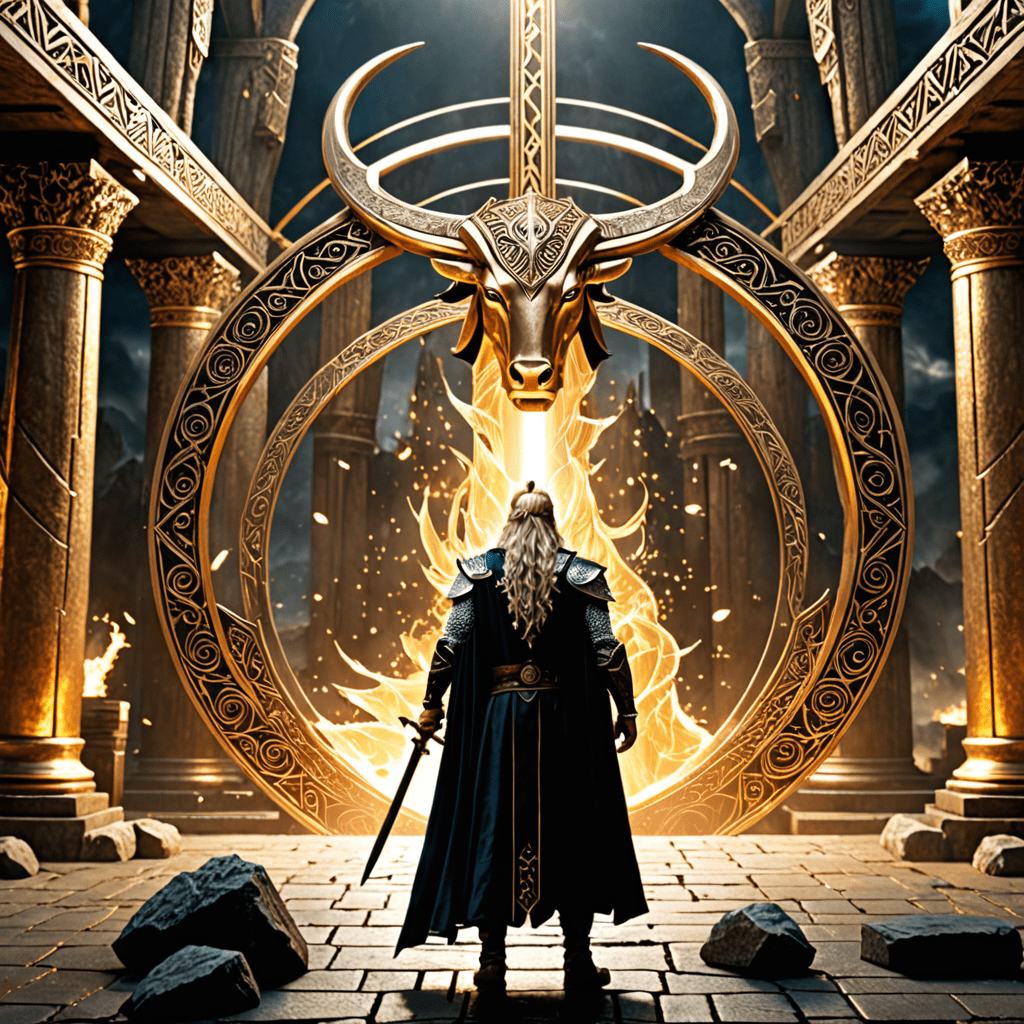Korean Grave Guardians: Unveiling the Mythical Jeseokjeok
In the realm of Korean folklore, the mystical jeseokjeok, often referred to as "grave guardian figures," hold a special place. These mythical beings are believed to protect the souls of the departed and their resting places. The word "jeseokjeok" itself combines the Korean words "jesu" (meaning "spirit" or "ghost") and "seokjeok" (meaning "stone animal"). This combination perfectly reflects the nature of these creatures – spirit guardians carved from stone. The jeseokjeok, with their fierce and often intimidating appearance, are a fascinating element of Korean mythology, deeply intertwined with the beliefs and customs surrounding death and ancestor veneration.
The Role of Jeseokjeok in Korean Folklore
The jeseokjeok have been an integral part of Korean folklore for centuries. They are believed to be guardians of the grave, serving as watchful protectors against evil spirits and malevolent forces that may seek to disturb the deceased. These mythical creatures are thought to be powerful and fierce, capable of warding off any threat to the peace of the departed. Their presence is seen as a symbol of respect and reverence for the ancestors, ensuring their souls find tranquility in the afterlife. Beyond their protective role, jeseokjeok also represent family lineage and the importance of honoring one's ancestors. They act as a tangible reminder of the family's history and its connection to the past.
Jeseokjeok as Protectors of the Dead
The jeseokjeok are considered powerful protectors of the dead in Korean folklore. They are believed to ward off evil spirits and malevolent forces that may try to disturb the deceased. Their presence is seen as a deterrent, a reminder that the grave is under the watchful eye of a powerful guardian. The jeseokjeok's fierce expressions and imposing forms are meant to instill fear in any malevolent entity that might dare to approach the grave. They are often depicted as fierce animals, such as lions, tigers, or mythical creatures like the kirin, symbolizing strength and power. Their placement at the entrance of tombs is a testament to their role as guardians, ensuring the deceased rest undisturbed.
The Physical Form of the Jeseokjeok
Jeseokjeok figures are typically carved from stone, taking the form of different animals or mythical creatures. While lions and tigers are common, other animals like dogs, cows, or horses can also be found. Sometimes, jeseokjeok might even be sculpted as human figures, often depicting warriors or guardians. The specific animal or creature chosen often reflects the individual's status or occupation, or even specific beliefs held by the family. Their appearance is typically fierce and intimidating, with imposing features like sharp teeth, claws, and bared fangs. This aggressive appearance serves to deter any potential threats, emphasizing their role as protectors. The size of the jeseokjeok varies depending on the size and grandeur of the tomb, but they are generally large and imposing, reflecting their power and significance.
Material Used for Jeseokjeok
The material used for jeseokjeok varies depending on the region and the availability of resources. Granite, limestone, and sandstone are the most common materials used, reflecting the durability and longevity sought for these guardians. The choice of stone often reflects the cultural significance and symbolism attached to the material. The stone used also plays a role in the overall aesthetic of the jeseokjeok. The texture and color of the stone can create a sense of age and reverence, further enhancing the jeseokjeok's role as a guardian of the deceased. The jeseokjeok are often left unpainted, reflecting the natural beauty of the stone and their connection to the earth. Sometimes, however, they may be painted in traditional colors, adding to their symbolic meaning.
Jeseokjeok as a Symbol of Family Lineage
The jeseokjeok figures hold a profound symbolic meaning in Korean culture. They represent the enduring legacy of a family and its connection to its ancestors. These stone guardians are often seen as a tangible expression of the family's history and its commitment to honoring the past generations. Their presence at the gravesite serves as a constant reminder of the family's lineage, ensuring its continuity and continuity.
The placement of jeseokjeok figures at the entrance of tombs signifies the family's dedication to the ancestors and their wish to protect their legacy. These guardians act as silent sentinels, safeguarding the resting place of the departed and ensuring that they remain undisturbed. The presence of a jeseokjeok figure is a symbol of respect, reverence, and the enduring bond between the living and the dead.
Theories on the Origin of the Jeseokjeok
The origin of the jeseokjeok remains an intriguing topic for scholars and historians. While the exact origins are unknown, several theories suggest possible influences that shaped this tradition. One theory suggests that the jeseokjeok tradition may have been influenced by ancient shamanistic practices. In shamanism, animals were believed to act as intermediaries between the human world and the spirit world. The choice of animal forms for the jeseokjeok could therefore reflect this belief, with the animals serving as protectors of the deceased's souls.
Another theory points to the influence of Buddhism, which was introduced to Korea in the 4th century AD. In Buddhist tradition, the concept of karmic retribution and the importance of protecting the deceased are central themes. The jeseokjeok figures, with their fierce forms, might have been influenced by this belief, serving as protectors against negative karma and ensuring the deceased's peaceful passage into the afterlife.
The Jeseokjeok and Shamanism
Shamanism, a central part of Korean spiritual beliefs, played a significant role in the development of the jeseokjeok tradition. In Korean shamanism, animals were often seen as powerful spiritual beings, capable of communicating with the spirit world. The jeseokjeok figures, often depicting animals like tigers, lions, or mythical creatures, reflect this shamanistic belief. These animal figures were believed to possess the power to ward off evil spirits and protect the departed from malevolent forces in the afterlife.
The jeseokjeok tradition further reinforces the connection between the human world and the spirit world in shamanism. The placement of these figures at the gravesite creates a symbolic barrier between the living and the dead, protecting the deceased's souls from harm. The choice of animal figures for the jeseokjeok also reflects the importance of animism in Korean shamanistic beliefs. Animistic beliefs, which see spirits residing in all living things, including animals, influenced the tradition of using animal figures as protectors for the deceased.
The Jeseokjeok in Modern Korean Culture
While the jeseokjeok tradition is rooted in ancient Korean beliefs, it remains a part of modern Korean culture. Although the practice of placing these figures at gravesites is less common today, the jeseokjeok continues to hold cultural significance and symbolic value. The jeseokjeok legacy is visible in contemporary art, literature, and popular culture. From traditional Korean folk paintings to modern sculptures, the jeseokjeok continues to inspire artists, signifying the enduring power of this ancient tradition.
These figures are often featured in stories and legends, reminding people of their role as protectors of the deceased and the importance of honoring one's ancestors. Even in modern times, the jeseokjeok serves as a symbol of Korean culture, representing its rich history, spiritual beliefs, and enduring connection to the past.
The Significance of Jeseokjeok in Korean History
The jeseokjeok figures are a testament to the rich cultural heritage of Korea. They reflect the deep-rooted beliefs and traditions surrounding death, ancestor veneration, and the importance of protecting the deceased from harm. The jeseokjeok tradition has evolved over centuries, reflecting changes in Korean society, but its core significance remains unchanged.
The jeseokjeok figures are more than just stone sculptures. They are a tangible reminder of the enduring bond between the living and the dead. They represent the reverence for ancestors that has shaped Korean culture for centuries. The presence of these figures in Korean history serves as a reminder of the importance of honoring the past and ensuring the continuity of family lineages. They also provide insights into the beliefs and practices of ancient Koreans, offering a window into their spiritual world and the role of mythology in their lives.
Frequently Asked Questions (FAQ)
Q: What is a jeseokjeok?
A: A jeseokjeok is a mythical guardian figure found in Korean folklore. They are often carved from stone and placed at gravesites to protect the deceased.
Q: What are jeseokjeok made from?
A: Jeseokjeok figures are typically made from durable stone materials such as granite, limestone or sandstone.
Q: What purpose do jeseokjeok serve?
A: Jeseokjeok are believed to protect the deceased from evil spirits and malevolent forces. They are also symbolic of family lineage and the importance of honoring ancestors.
Q: What animals are commonly depicted in jeseokjeok figures?
A: Common animal forms for jeseokjeok include lions, tigers, dogs, cows, horses, and mythical creatures like the kirin.
Q: How are jeseokjeok figures related to shamanism?
A: Shamanistic beliefs influenced the use of animal figures in jeseokjeok, as animals were seen as powerful intermediaries between the human and spirit worlds.
Q: Do people still use jeseokjeok figures today?
A: While less common than in the past, jeseokjeok figures continue to hold cultural significance in modern Korean culture. They are often seen in art, literature, and folklore.



